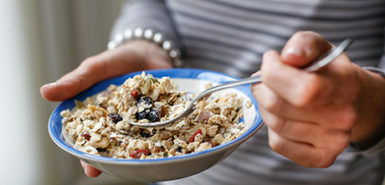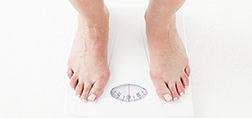
With summer just around the corner, this is a great time to take advantage of all the natural things that come from our Earth.
The day was established in 1970 by then Wisconsin Senator Gaylord Nelson. He wanted to push for a healthy, sustainable environment by organizing massive coast-to-coast rallies. He certainly succeeded—thousands of colleges and universities across the country organized protests against the deterioration of the environment.
So, what could Earth Day possibly have to do with women’s health? Plenty, actually.
We all need to do our part in being kind to our Earth just as we must all be kind to our bodies. We can use Earth Day to celebrate our own successes, and we can make analogies in women’s health about eating fresh (think local) and taking care of ourselves.
This includes not only eating well but also being active in our own environment. We all have so many opportunities for exercise close to home, especially right here in West Michigan: hiking or trail running at Hoffmaster State Park in Muskegon, kayaking on Lake Michigan, mountain biking at Cannonsburg ski hill, running around either Reed’s Lake or Spring Lake, or walking our beautiful beaches.
We also need to utilize the possibilities that are found almost in our own backyards. There are many local farms in West Michigan, and the farmers bring their goods to sell at weekly markets.
Here are just a few of the fantastic farmer’s markets available in our area:
- Holland—See website for hours.
- Spring Lake—Every Thursday starting June 1.
- Grand Haven—Opens May 6.
- Muskegon—Farmers Market
- Grand Rapids—Indoor Downtown Market (on Ionia) open every day; outdoor Fulton Street Farmers Market open Saturdays in April.
In addition, many cities offer a local CSA (Community Supported Agriculture) program that allows families to purchase a variety of fresh vegetables each week all year round. CSAs have become a popular way for consumers to buy local, seasonal food directly from nearby farmers. They are becoming increasingly popular and easy to find by searching online or looking in your local newspaper.
As you can see, there are many options for eating healthy and staying fit throughout the year.
Many of the symptoms of midlife and menopause—hot flashes, night sweats, weight gain, sleep disturbance, low sex drive—can be treated by utilizing the many natural options available to us. The No. 1 treatment for these symptoms is a healthy diet that is low in simple sugar and high in fiber, vegetables, whole grains, and protein. Following this type of diet can help keep away the belly fat, which in turn helps with your sex drive, hot flashes and mood swings.
Another natural treatment for menopause symptoms is to lead an active life. Just 150 minutes of activity each week can help you avoid weight gain, and women who are more active have fewer mood swings, and less depression and anxiety.
In addition, eating adequate amounts of fiber (both soluble and insoluble) not only keeps our colon healthy but also helps reduce vaginal dryness and infections by keeping our stools well formed. Fiber can be found in green vegetables (available at farmer’s markets, of course), cooked oatmeal, and whole wheat bread.
A question my patients frequently ask me refers to the term “natural” and what that means when it comes to medications for the treatment of menopause symptoms. When we think about foods that come from nature, it’s usually easy to identify what those are—if it was picked from a field or a tree, it’s “natural.” But, the term “natural” in reference to medications can mean different things to each person.
How I think of it is natural means identical to what our body makes or what is found in nature. Many plants can be natural but not safe—think poison ivy or poison mushrooms. Other plants are both natural and safe, and contain compounds that are precursors to what our body can use as medicine: fungus that is used to make antibiotics, pre-progesterones found in yams, pre-estrogens found in soybeans, or pre-ethanol found in corn.
In terms of Hormone Replacement Therapy, the No. 1 goal is safety.
Women often ask me if hormones sold as “natural” from plants are safer than hormones sold in pharmacies. It’s important to note that estrogen is estrogen is estrogen. If the medicine has estradiol in it, no matter where it comes from, it can turn on the estrogen reception in our cells and something happens—whether it’s in the brain, heart vessels, liver, breast, bone, or uterus.
The safest way to take hormones is to know exactly what you are taking—in a consistent amount and at the lowest dose that works for you. Whether or not to take hormones is an individual discussion between you and your doctor, nurse practitioner, or physician assistant. For some women, hormone therapy is safe, and for others, the risks outweigh the benefits and could cause harm.
I sleep at night by following the best science available to me now, and I maintain my certification as a Certified Menopause Practitioner with the North American Menopause Society.
 /a>
/a>
 /a>
/a>
 /a>
/a>